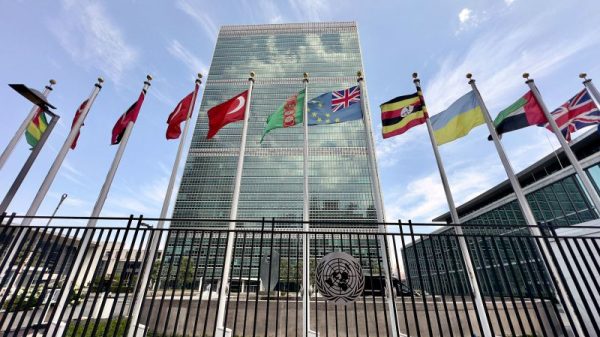In the wake of the 2016 election, The Washington Post partnered with George Mason University’s Schar School to gauge how people felt about the results. Unsurprisingly, people who voted for Donald Trump were happy and Hillary Clinton voters were upset.
We also heard from people who didn’t vote at all. They were far more likely to say they were upset or felt terrible than that they felt happy. To which the appropriate response was: dude?
Later analysis indicated that millions of people who voted for Barack Obama in 2012 declined to vote in 2016. Many of them probably lived in states where their votes wouldn’t have mattered much, such as New York or California. But some segment of that group probably could have influenced the outcome in the three states that Trump flipped red on his way to the White House.
2024 might come down to the same issue.
One of the then-unique characteristics of the 2016 election was that Trump and Clinton were each viewed negatively by large swaths of the electorate. That wasn’t the case in 2020; Joe Biden was viewed more positively than Clinton had been. But that was then. For several reasons — most obviously that being president leads to more disappointment than talking about being president — Biden is now not much more popular than Trump was at the same point in 2019. We are again poised for an election in which a lot of Americans view both candidates with distaste and, perhaps to a significant extent, either stay home or vote for a third-party candidate.
Early polling (admittedly very early) shows that a similar percentage of Americans view Trump and Biden unfavorably as 2016 voters did Trump and Clinton. Trump has generally done well with these voters, as the candidate representing the burn-it-all-down approach to Washington.
This question becomes far more acute when overlaid with Biden’s challenges with younger voters. Last year, we saw the president’s approval among younger voters collapsing. Recent polling, including from CNN and its polling partner SSRS, shows that Biden and Trump are running about even with younger voters — an age group that Pew Research Center’s validated polling shows backed Biden by 26 points three years ago. Granted, the two universes don’t overlap entirely given the ranges CNN and Pew used and given that the membership of age groups changes over time, but this is still a dramatic shift.
What we don’t know, though, is who from that age group will come out to vote.
As Pew’s research shows, the youngest voting bloc consistently makes up far more of the nonvoting population than the voting population. From 2016 to 2022, people under 30 made up an average of 12 percent of the electorate and 29 percent of the nonvoting population, a 17-point gap. Those 65 and up made up an average of 30 percent of the electorate and only 11 percent of nonvoters, a 19-point gap.
There are a lot of reasons for this that we’ve explored before including, for example, that there are more polling places in senior centers than at colleges. But that gap has an obvious effect.
In those four election cycles, the youngest age group was most likely to back Democratic congressional and presidential candidates. In 2016, the youngest voters were also the most likely to back third-party candidates. The oldest age group was generally most likely to back Republicans.
The hard-to-answer question is how those young people who didn’t vote would have voted. It seems safe to assume that they are more disconnected from politics than their peers and are clearly more apathetic. Young voters are more likely to be members of third parties or to back political independents. Independents tend to be less engaged politically.
CNN’s recent poll asked a question that evaluates this nicely. Respondents were asked whether they believed there were important differences between the parties, an idea whose rejection has long been a common argument among those disengaged from the process. Seven in 10 respondents said there were important differences — a small increase from past CNN polls. But the youngest respondents were most likely to say there was no difference, as (predictably) were independents.
This suggests a higher likelihood of simply declining to choose between Trump and Biden. After all, if the choice doesn’t matter, why feel urgency to make a choice?
According to Pew, young people voted for Democrats by wider margins in 2022 and 2018 than they did in 2016 or 2020, suggesting either that less-frequent young voters (like those who turn out in presidential contests) lean more to the right or that the presidential candidates weren’t as popular as generic House Democrats. (Or, of course, both.) Both scenarios help explain why Democrats fared well in 2018, 2022 and in last week’s off-year elections. Neither should be much comfort for Biden in 2024.
There’s a lot of time until next year. Many Americans are paying only a little attention to the 2024 contest, justifiably, and may not recognize that it will probably be a rematch of 2020. But there’s a reason that Biden and his allies have targeted younger voters and voters of color, groups that overlap to a significant extent.
If those voters stay home more than they did in 2020, he risks not being reelected. A post-2024 poll in which those nonvoters express regret about the election outcome will probably not offer Biden much solace either.







































